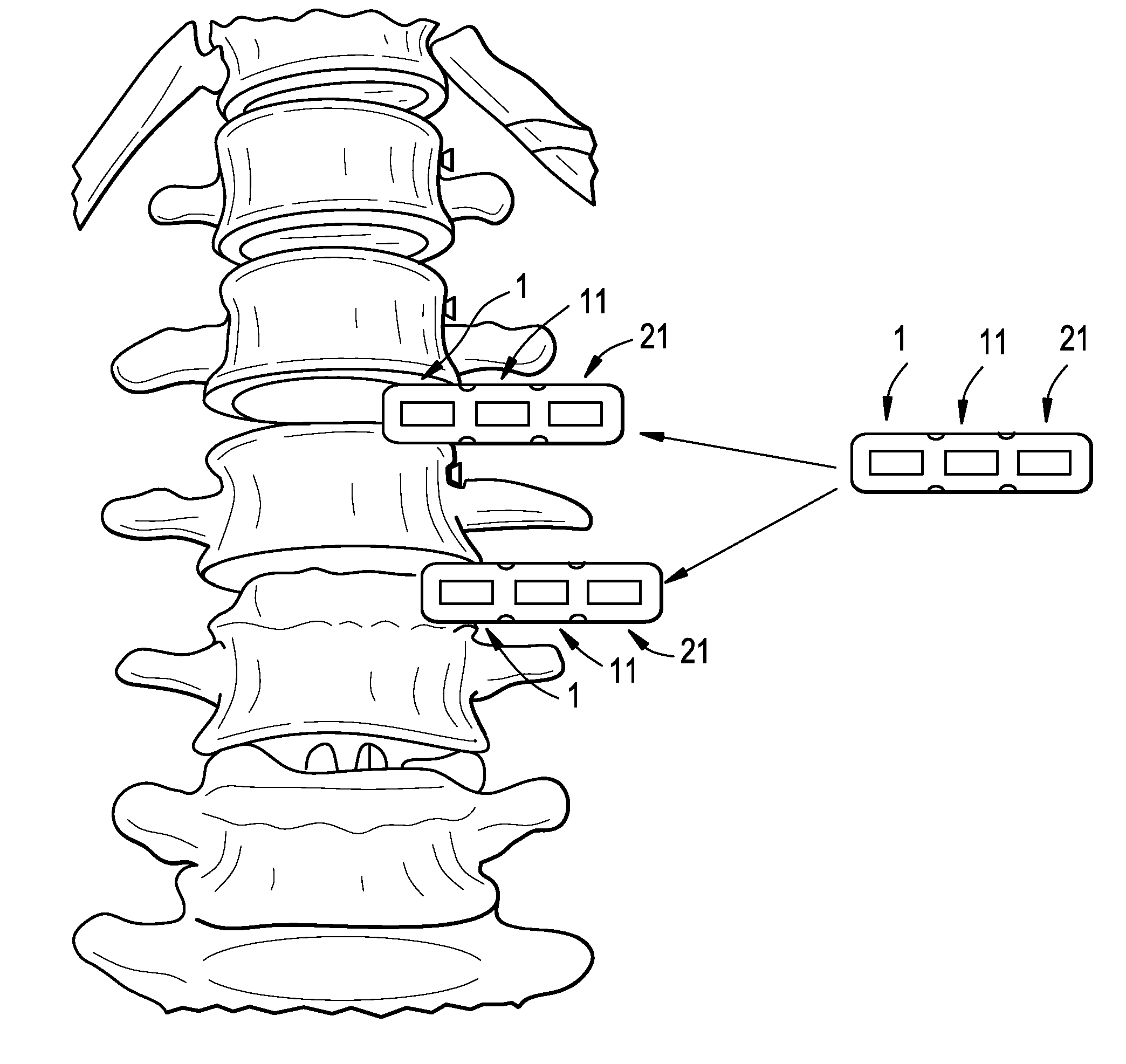Multi-Segment Lateral Cage Adapted to Flex Substantially in the Coronal Plane
a lateral cage, multi-segment technology, applied in the field of multi-segment lateral cages, can solve the problems of increased surgery time, spinal instability, and inability to achieve direct lateral access parallel to the l4/5 and l5/s1 levels
- Summary
- Abstract
- Description
- Claims
- Application Information
AI Technical Summary
Benefits of technology
Problems solved by technology
Method used
Image
Examples
Embodiment Construction
[0072]For the purposes of the present invention, insertion or access path that is “substantially in the coronal plane” means insertion + / −30 degrees of an anterior-posterior midline. Preferably, the insertion or access path is between 0 degrees and +30 degrees of the anterior-posterior midline. More preferably, the insertion or access path is between 0 degrees and +15 degrees of the anterior-posterior midline. In some embodiments, the insertion or access path is at about 0 degrees of the anterior-posterior midline.
[0073]Now referring to FIGS. 1-8, there is provided a flexible lateral intervertebral fusion device comprising:[0074]a) a first cage 1 having an upper surface 2, a lower surface 3, anterior 4 and posterior 5 sidewalls therebetween, a proximal wall 6 and a distal wall 7,[0075]b) a second cage 11 having an upper surface 12, a lower surface 13, anterior 14 and posterior 15 sidewalls therebetween, a proximal wall 16 and a distal wall 17,[0076]c) a third cage 21 having an upper...
PUM
 Login to View More
Login to View More Abstract
Description
Claims
Application Information
 Login to View More
Login to View More - R&D
- Intellectual Property
- Life Sciences
- Materials
- Tech Scout
- Unparalleled Data Quality
- Higher Quality Content
- 60% Fewer Hallucinations
Browse by: Latest US Patents, China's latest patents, Technical Efficacy Thesaurus, Application Domain, Technology Topic, Popular Technical Reports.
© 2025 PatSnap. All rights reserved.Legal|Privacy policy|Modern Slavery Act Transparency Statement|Sitemap|About US| Contact US: help@patsnap.com



